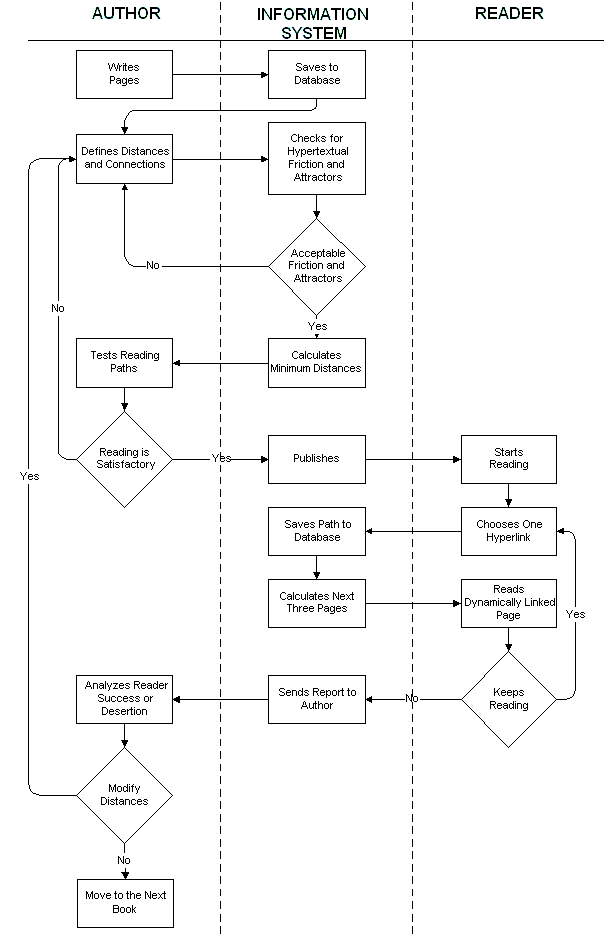
|
| Home | Books | Forums | About... |
What is adaptive digital narrative?Adaptive digital narrative pieces in Literatronic are identified with the
following icon: It is a writing and reading form in which the links have different destinations depending upon what the reader has read before. An adaptive literary piece reconfigures itself for the reader, leading every time to a potentially unique book. In other words, the media acts on the message. The adaptivity can be complex, as in Extreme Conditions, a piece that lends itself to non-linear reading thanks to a circular array of events, or simple as in The First Flight of the Wright Brothers, a piece designed to be read more or less linearly. One of the main arguments opponents of hypertext have shown in the past against it is the fragmented story that is offered to the reader. In this case, the reader receives a plot that is optimized, from the narrative perspective. That is to say, the reader receives a linear text most of the times. This raises a question: Are multilinearity and fragmentation the goal of digital narrative, or are they the product of the state of the art when the first literary hypertexts were produced? Is fragmentation a paradigm that we want to preserve? We have the ability to produce a text that exploits the essence of digital media, and that at the same time preserves the essence of narrative in a classical sense: immersion. Fiction works in Literatronic are part of an information system that interacts with the reader. Adaptive books cannot be reproduced on paper except, perhaps, as a reading path at a given moment. That is Literatronic: letter that cannot be without the digital media. How does it work:
|
